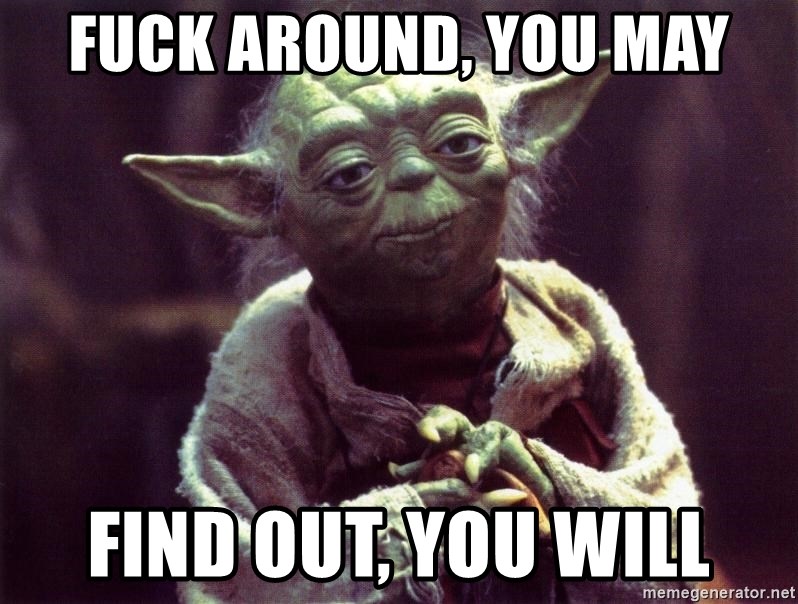You are using an out of date browser. It may not display this or other websites correctly.
You should upgrade or use an alternative browser.
You should upgrade or use an alternative browser.
Star Wars Episode VII & Beyond On-going Discussion (Disney+ adding 10 NEW STAR WARS SERIES)
- Thread starter playahaitian
- Start date
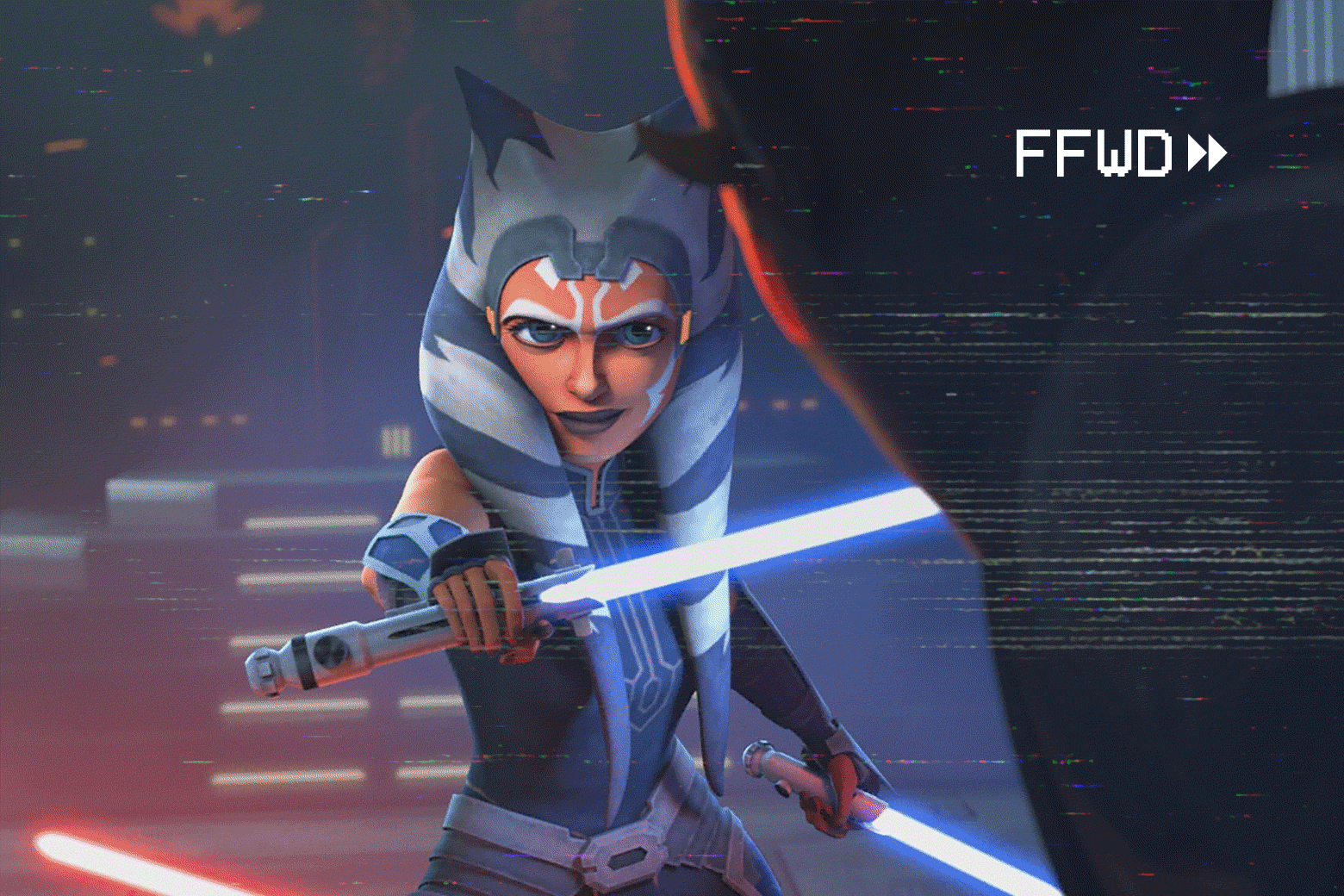
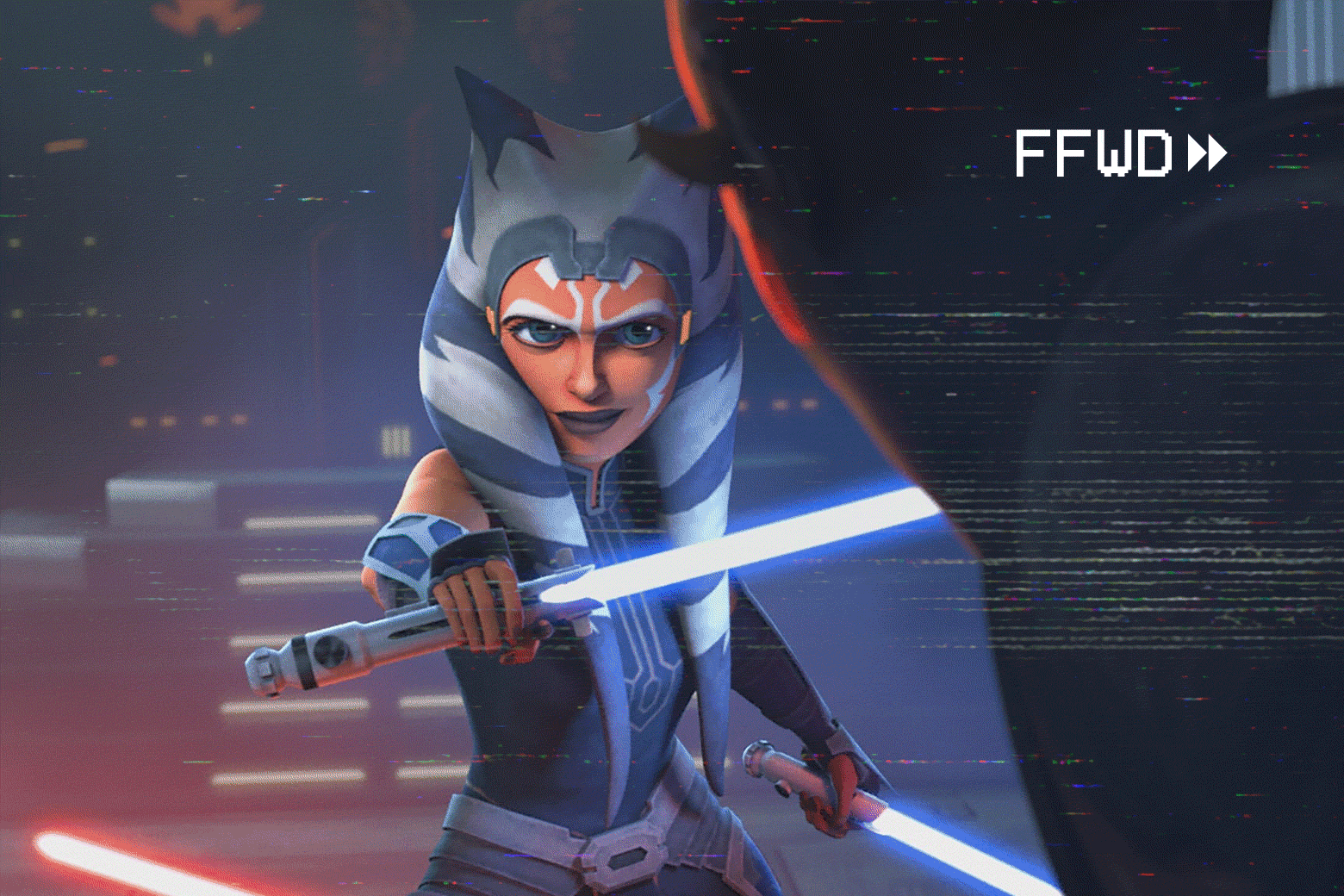
A Guide to Star Wars: The Clone Wars for Grown-Ups
If you’re a Mandalorian fan who just wants to know more about Ahsoka Tano, Boba Fett, and Mandalore, this guide is for you.
Star Wars: X-Wing
Fan Film
LucasFilm needs to hire this cat.
Imagine watching this in theaters.
Fan Film
LucasFilm needs to hire this cat.
Imagine watching this in theaters.
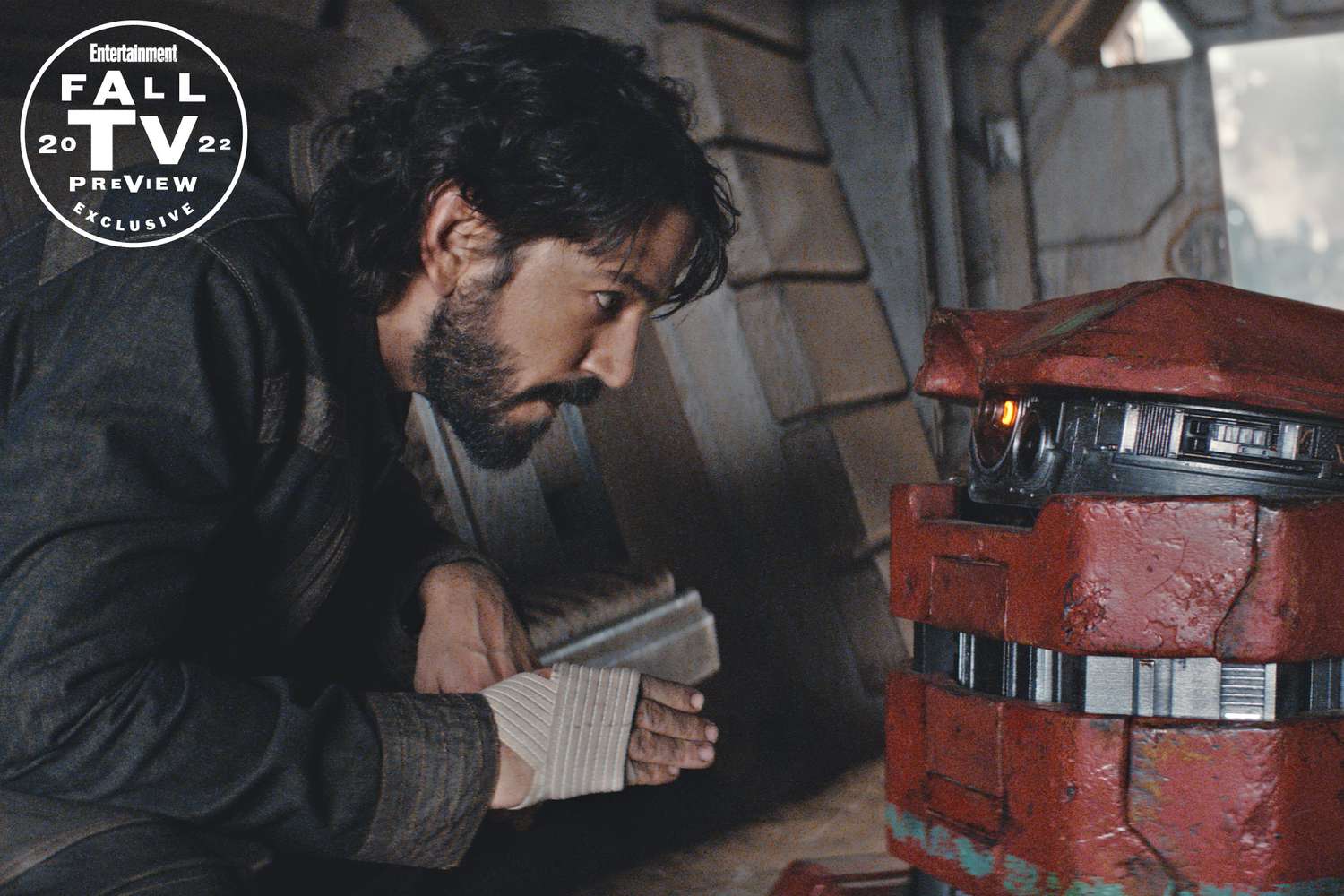
Meet B2EMO, the adorable new salvage droid in 'Andor'
'Andor' introduces a new 'Star Wars' droid: the tiny salvage mech B2EMO, who's fiercely loyal to Diego Luna's Cassian.
New Star Wars Show 'Skeleton Crew': Get a First Look at Jude Law in Space
Law stars in Disney's coming-of-age series about kids who find themselves adrift in space.
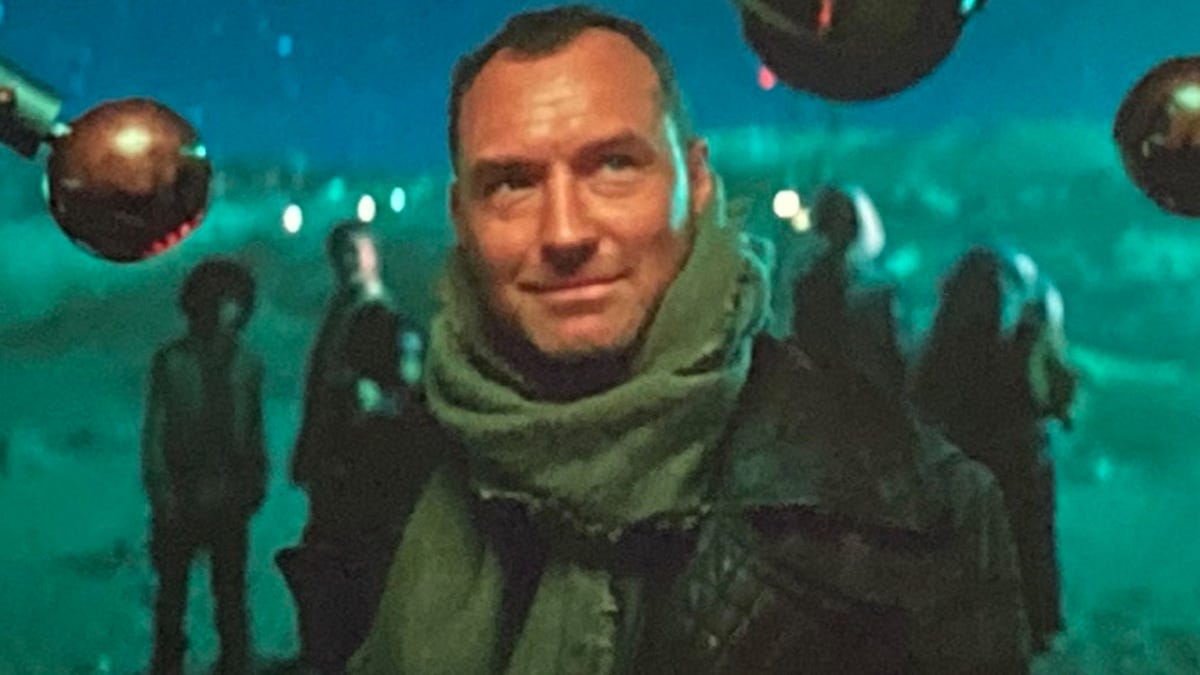
 www.cnet.com
www.cnet.com
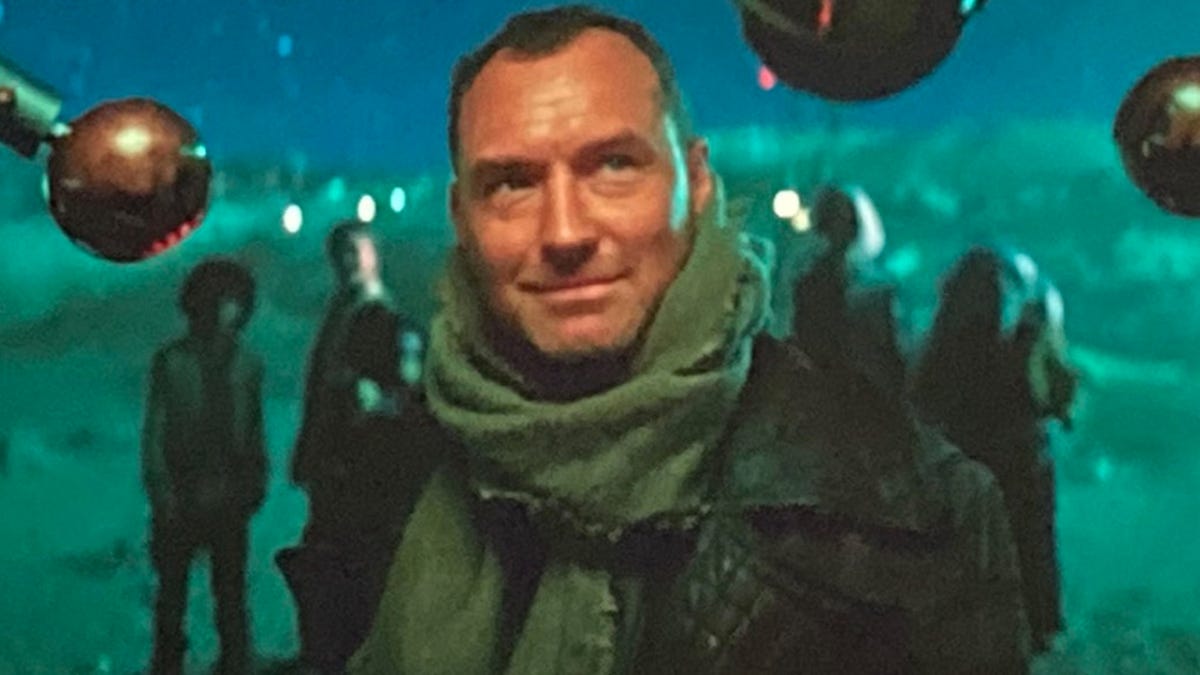
Law stars in Disney's coming-of-age series about kids who find themselves adrift in space.

New Star Wars Show 'Skeleton Crew': Get a First Look at Jude Law in Space
Law stars in Disney's coming-of-age series about kids who find themselves adrift in space.

"Space Cases" in the SW universe..?New Star Wars Show 'Skeleton Crew': Get a First Look at Jude Law in Space
Law stars in Disney's coming-of-age series about kids who find themselves adrift in space.

New Star Wars Show 'Skeleton Crew': Get a First Look at Jude Law in Space
Law stars in Disney's coming-of-age series about kids who find themselves adrift in space.www.cnet.com

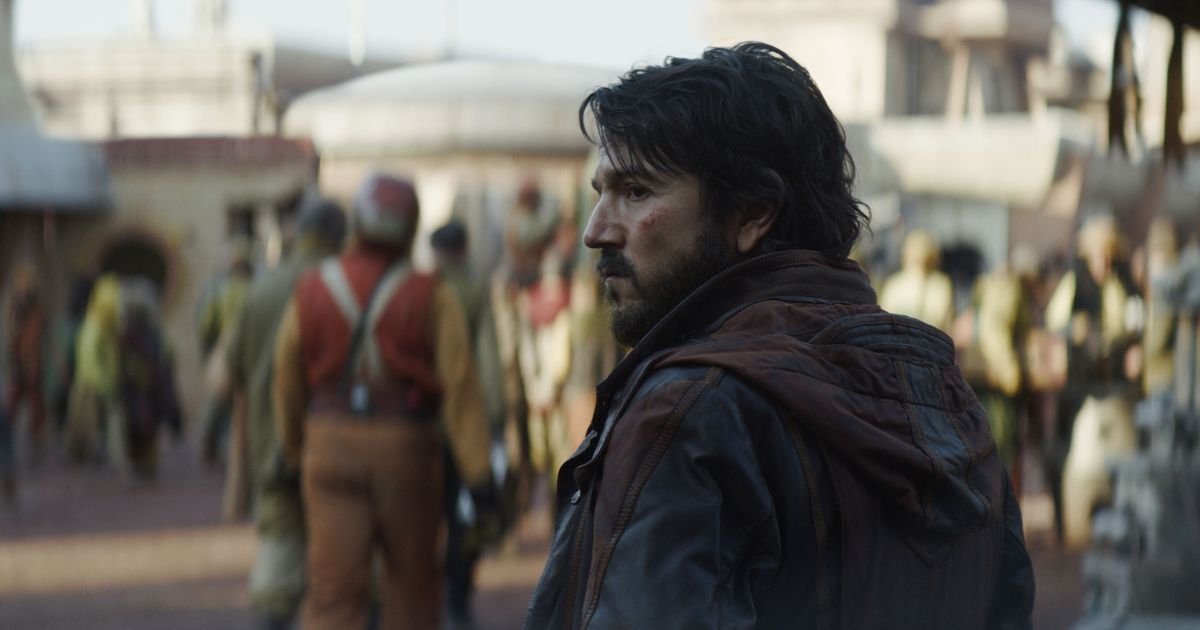
Andor Is the Cure for Star Wars Ennui
The franchise hasn’t felt this challenging, invigorating, or dangerous in quite some time.
Andor Is the Cure for Star Wars Ennui
By Roxana Hadadi@roxana_hadadi
Roxana Hadadi is a TV critic who also writes about film and pop culture — with the closed captions on and motion smoothing off.
A scene-stealer in Rogue One, Diego Luna is mesmeric in a role and a series that actively rejects a “one hero to save us all” approach. Photo: Lucasfilm Ltd. via Disney+
Diego Luna’s Cassian Andor gets a certain look when he’s angry: a set-jaw, furrowed-brow glare that is simultaneously resentful, accusatory, and pitiless. He slips into that expression more than once in the first four episodes of Andor, and series creator and showrunner Tony Gilroy, who co-wrote Rogue One: A Star Wars Story (the film that introduced Cassian and of which Andor is a prequel), frames it in a variety of ways. In tight close-up or mid-range profile, under a hood, in shadow, during a shoot-out: Whatever circumstances cause or surround that reaction from Luna’s Cassian, he and Gilroy ensure that it feels like a promise. Star Wars hasn’t felt dangerous in a long time, but when Andor focuses on that face and all that it suggests? The “pockets of fomenting” that an Empire-affiliated villain worries are spreading across the galaxy suddenly have recognizable potency, and the thrillingly realized Andor immerses us in that early agitation through Luna’s mercurial visage.
Introducing Into It with Sam Sanders, Vulture’s new culture podcast.
LISTEN NOW
Working backward has not entirely worked in Star Wars’ favor recently. A pivot into spinoffs with predetermined endpoints has led to a frustrating feeling of narrative tedium (Obi-Wan Kenobi, The Book of Boba Fett) and, like the film series that inspired them, an over-reliance on the Skywalker name (The Mandalorian). Where’s the tension when you know that neither Princess Leia nor Obi-Wan is in any real danger? Where’s the heft when Boba Fett’s power struggle with a criminal gang feels so weightless? Where’s the singularity when The Mandalorian betrays its own individual potential by bringing in a CGI Luke? Meanwhile, back in the universe of the films, a certain subset of the fault-finding Star Wars faithful will insist that Rogue One is only popular because it’s the choice for franchise fans who subconsciously hate themselves for liking a pop-culture property intended for children. That attitude has led these fans to embrace the film despite its sloppy script and frenetic pacing, these pontificators say, because its gritty action sequences and themes of betrayal and sacrifice feel more adult.
In that judgment, though, they’re unintentionally right: Rogue One’s impact stemmed from how it reminded viewers of the evil of the Empire as an institution outside of Jedi-chasing. (Remember how everyone died at the end? It got bleak!) The Empire’s corruption and greed, its resource-stripping and dehumanization of worlds and peoples it deemed lesser-than — those qualities make it a threat to so many millions more than just those who use the Force. In centering that element of the Empire and those motivated to work for and against it, Andor opens a wealth of narrative possibilities for the world imagined in Rogue One and delivers them with intentional world-building, compelling character relationships, and gorgeous cinematography that proves that breaking away from the Volume video wall, with which the other Star Wars series are filmed, was the right choice.
Gilroy and his collaborators have basically made a version of Michael Clayton in space, slotting Cassian into George Clooney’s fixer type — someone whose inspiration transforms from personal survival to principled resistance — and the Empire into the role of a wealthy, lazy, and smug corporation pleased with its own ability to stamp out dissent. The allies who work with the former are creative, ruthless, and working-class: mechanics, junkyard foragers, refugees, and children of abandoned industry towns who organize networks of rebellion. The villains who work with the latter are middle managers, administrators, and cops: supervisors who fret over whether the sectors and planets they control are meeting their arrest quotas and contractor security guards who yearn to be real Empire.
There has always been a demarcation between the haves and have-nots in Star Wars, but too often of late, that differentiating point has been the Force. Andor drags attention back to a simple but effective notion of power in all of its forms (occupation and colonialism, the illusion of democracy and the capitulation to private industry), then weaves a web of characters who inject shades of gray into these binaries. “Special people are hard to find,” Stellan Skarsgård’s Luthen Rael tells Cassian in his recruitment pitch, but Andor, like Rogue One, actively rejects a “one hero to save us all” approach. Specialness isn’t what’s needed most by the rebellion. It needs willfulness and willingness, and anyone, special or not, can have that.
Premiering September 21 on Disney+ with three episodes that essentially combine into an extra-long pilot, Andor will run for two 12-episode seasons with an array of time jumps built in. The first season will cover a year, while the second season will cover an additional four years; each three-episode block is helmed by one director to build cohesion. That structure allows Gilroy and director Toby Haynes to set an initial sense of scale and scope before other writers (like Tony’s brother Dan) and directors (such as Susanna White) pick up where they left off and they lead us into Andor primarily through contrast. The verdant jungle planet of Kenari, flashbacks to which show Cassian’s Monos-like childhood, is oppositional to the Empire’s sterile Imperial Security Bureau headquarters, which is all gleaming glass and shades of white. The methodical way Luthen disguises himself when slipping back into his life on Coruscant is at odds with the impetuousness of ambitious baddie Syril Karn (Kyle Soller), whose grudge against Cassian turns him reckless. And the series’ first scene, which evokes Blade Runner and Heat by opening with Cassian searching for someone in a brothel and ending in a double murder, is so comparatively spicy for this universe that it instantly signals Andor’s intentions. Lives have been lost and will continue to be lost, because war isn’t on the horizon, it’s already here.
None of this is exactly subtle, but that doesn’t mean it’s ineffective. Luna was a scene-stealer in Rogue One and is mesmeric here in a role that requires Cassian to, at first, be a bit of a deadbeat — borrowing money from his friends and never paying them back; causing friction in the relationship between his ex-girlfriend Bix (Adria Arjona) and her new beau, Timm (James McArdle); and worrying his adoptive mother, Maarva (Fiona Shaw), and droid B2EMO (built by Star Wars designer Neal Scanlan). The venom he imbues into anti-Empire dialogue — “They’re so fat and satisfied, they can’t imagine … that someone like me would ever get inside their house” — is thrilling, but so is how Andor swerves by refusing to make Cassian blandly noble. In Luna’s accomplished hands, he’s pricklier and more nuanced than that, and Andor gives the character space to expand who he can be while peering into his past, sketching out his present, and laying down a path for how he becomes the cunning spy of Rogue One. In taking time to grow its central character, Andor unveils an ensemble with characters who drive a number of intriguing subplots — in particular, Genevieve O’Reilly’s resistance-aligned Senator Mon Mothma and Faye Marsay as a rebel leader unsure of Cassian’s trustworthiness.
Those who have seen Rogue One know how part of this story ends, and Andor doesn’t rely on us forgetting that; it acknowledges Cassian’s fate with a line so blatant that it can’t even qualify as an Easter egg. But Andor is better for that bluntness — and for the unapologetic way it rejects the nostalgic ennui that has for so long defined this franchise. In Gilroy’s Michael Clayton, Clooney’s titular character insisted, “I’m not the enemy,” to Tom Wilkinson’s Arthur, who blew up his whole world by wondering, “Then who are you?” Andor brings that same question to Star Wars, and the interiority and self-reflection it demands have created the most challenging and invigorating work in this galaxy in years.
‘Andor’ Creator Tony Gilroy Urged His Team to Put Aside Their ‘Star Wars’ Reverence
The showrunner, who crafted a critically acclaimed show by encouraging people to forget they were working in a galaxy far, far away, recalls advice to his collaborators: "You're here because we want you to be real."
BY BRIAN DAVIDS
Plus Icon
SEPTEMBER 23, 2022 10:39AM
'Andor' creator Tony GIlroy ALBERTO E. RODRIGUEZ/GETTY IMAGES
Logo text
When Tony Gilroy joined the Star Wars galaxy to reconfigure Rogue One, he was unafraid to make the tough choices. His superpower, as he called it, was that he wasn’t a lifelong Star Wars fan, allowing him to take some big swings such as sacrificing Rogue’s main characters. Gilroy certainly became a fan of the franchise during his time on Rogue, paving the way for him to join Andor as creator/showrunner once previous development stalled.
When the series eventually entered into production, Gilroy noticed that his collaborators were altering their behavior and performance because of their nostalgia for Star Wars. So he had to encourage them to put aside their fondness as best they could.
“In every department, we’ve had all kinds of people come in, and they know it’s Star Wars, so they change their behavior. They change their attitude. They change their thing,” Gilroy tells The Hollywood Reporter. “And you go, ‘Wait, no. Do your thing. You’re here because we want you to be real.’ So it’s a testament to the potent power of Star Wars. It really gets into people’s heads, but to change the lane and do it this way, it takes a little effort.”
Gilroy, who’s directed thrillers such as Michael Clayton and The Bourne Legacy, was originally going to helm a portion of Andor season one until Covid-19 upended that plan. There was also a hope that he was going to be able to direct a block of season two, but he admits that the job of showrunner is too demanding of his time.
“I am not [directing in season two]. I can’t. This job is just too huge. I don’t have the time to spare. It’s a really poor use of my time,” Gilroy says. “[Director] Ari [Ariel] Kleiman is out in Pinewood. We start shooting in November. He started prepping three weeks ago. He’s got his hands full out there just to get to November. There was some fantasy that I would end up doing the last block, but I just can’t, to be honest with you.”
In a recent conversation with THR, Gilroy also discusses the ambitious Andor “manifesto” he wrote for Lucasfilm boss Kathleen Kennedy, at a time when the company had cooled on a previous creative team’s iteration.
Well, Tony, Andor is exactly what I’ve been waiting for from Star Wars.
Wow, let’s just finish there. We’re done.
Have a nice day!
(Laughs.)
So I used to believe that Star Wars filmmakers needed to be lifelong Star Wars fans, but thanks to you, I no longer hold that opinion. Andor feels wholly unique to Star Wars, and I think it’s because you’re not coming from a place of nostalgia. So do you still believe that not being a lifelong fan is your “superpower”?
I think it imprinted on Rogue because that was my point of entry. It wasn’t that I didn’t like it. It just wasn’t on my radar. I wasn’t in awe of it. So when I came in here to futz around and repair [Rogue One], I knew I’d do my thing. I was going to bring my thing here. And it worked. We won, and then everybody was incredibly euphoric and everything. So my sort of imprinting experience was, “Well, that’s how you do it.” And that’s what I do. That’s the way to go. So I didn’t have to relearn that.
It’s really fascinating. We have this experience all the time. In every department, we’ve had all kinds of people come in, and they know it’s Star Wars, so they change their behavior. They change their attitude. They change their thing. An actor will come in off a Ken Loach movie or something, they’ll put on a Star Wars [costume], and all of a sudden, this great actor, who auditioned for you and didn’t know what it really was, starts acting differently. And you go, “Wait, no. Do your thing. You’re here because we want you to be real.” So it’s a testament to the potent power of Star Wars. It really gets into people’s heads, but to change the lane and do it this way, it takes a little effort. It’s interesting.
ADVERTISING
(L-R): Tony Gilroy and Diego Luna on the set of Lucasfilm’s ANDOR, exclusively on Disney+. ©2022 Lucasfilm Ltd. & TM. All Rights Reserved. COURTESY OF LUCASFILM
I just referenced your conversation with writer Brian Koppelman in 2017, and at the time, it sounded like you didn’t expect to return to Star Wars. What brought you back?
They tried to do a couple different versions of this show along the way. I wasn’t really interested, but the people that were trying it were feeling a little bit trapped in what we just discussed, this reverence for Star Wars. But they were also kind of inhibited because the economics weren’t really in place for large-scale streaming at that point. The economics to make a show like this, there wasn’t anybody who was going to spend that kind of money on a show. Now, there’s a bunch of aircraft carriers that are floating around; this is becoming a normal thing. (Laughs.)
But along the way, Kathy [Kennedy] sent me one of the pilots that they were thinking about, but had grown cool on, and she asked what I thought. And in some sort of … I don’t know. I had time. I was in some sort of manic thing, and so I just got on it for a couple days. So I wrote this big manifesto for her. “This is what your show should be like. This is what you should never do. This is why this doesn’t work.” So it was a crazy thing, and it was wildly ambitious. And they were like, “Well, that’s really great. Thanks for helping us know what’s wrong, but we could never do this.” Then they tried a couple other things, and when everything had gone cold, there was a moment where, my God, streaming was whoa. Now we can really do it.
ADVERTISING
So they went back and pulled this old memo, and they were like, “We want to do this now.” They wanted to be that ambitious on this scale, and the timing was right for me. I had a bunch of other things fall apart. I was getting a little tired of things falling apart, and the one thing that they definitely have is an audience. So it wasn’t an overnight thing that you tiptoe into. It takes a long time. Everybody tiptoes forward, but that’s how it came to be.
Cassian Andor (Diego Luna) in Lucasfilm’s ANDOR COURTESY OF LUCASFILM
The Volume is amazing technology, but nothing beats the old ways of building sets and shooting on location. Thus, Andor’s production value is immaculate. Did you lobby to shoot on location and build massive sets? Was that a prerequisite for you?
It wasn’t really an issue. When I came on, Sanne Wohlenberg was the producer of record. She came with the existing pieces of the show. So Sanne was there, but I didn’t know her. She had just done Chernobyl, and it was sort of a shotgun marriage. So here we were together, and I had no idea that she was just going to be this rockstar producer.
And so the first decision you have to make is who’s going to be your production designer. Even in writing, my first call is to the production designer, because everything we do has to be designed. So we put a marker down. It was kind of a test for Disney: “How serious are you?” We didn’t want to go with any of the traditional Star Wars people. We wanted [production designer] Luke Hull, who was like 12 years old and had just done Chernobyl. He’s just a fricking genius, but non-Star Wars in every way. So we brought him over. As I was doing the [series] bible, I wrote the first three episodes as a sort of a test.
ADVERTISING
In a perfect world, we’d be able to shoot location and shoot old school, and then we’d use the Volume when we want to use it. There are times when the Volume would be really good for us, but the technology doesn’t exist to do both. You have to make a choice at this point because of the workflow on the Volume. All your post-production has to be done beforehand. You have to shoot all of your plates. Everything has to be done. When you go in the Volume, everything’s done. You’re just adding the actors.
Our system is completely different. We shoot everything with the actors, and we build out from there if we need to build out. And those two systems, maybe there’s somebody who’s doing it, but economically, you can’t do [both]. So, automatically, we were just like, “We have to be a build show.” It wasn’t a controversy, really. I saw it get turned into a controversy the other day, but it’s not like that at all. There are times where we’d love to use it. It does some great things.
When you invent the past, you recontextualize the future. So will this story change the way we look at Rogue One?
Yes, definitely. (Gilroy smiles.)
Cassian not only owes money to people, but he’s also in a situation where the walls are closing in on him. And so for anyone who’s familiar with your past work, they know that this is right in your wheelhouse. Do you recognize any other through-lines?
Oh my God, yeah. I haven’t changed one single bit. I do the same thing I’ve always done. From the moment I figured out how to really do it, or evolved into it, I’ve never changed my process. I bring my game and my system. I haven’t changed to do this.
ADVERTISING
(L-R): Luthen Rael (Stellan Skarsgard) and Mon Mothma (Genevieve O’Reilly) in Lucasfilm’s ANDOR COURTESY OF LUCASFILM
Stellan Skarsgard’s character, Luthen Rael, is already one of the most fascinating characters in Star Wars. My favorite moment of the series so far is in episode four, when Nicholas Britell’s theme plays over him as he readies himself on his ship and cracks a wry smile.
Oh my God, isn’t that gorgeous? We just finished the score three weeks ago. [Writer’s Note: This interview took place on Aug. 5th.] We just finished mixing episode 12 the day before yesterday, and people are going to flip out over what Nick has done. This job is just so intense, and there’s so much going on. Nick lives 11 blocks away from me in New York, and so I would just go to his house to work. For two years, we’ve been doing the music, and going to his house is really like going to church. We’ve just had so much fun. Seven hours of music. It’s an entirely new vocabulary for Star Wars, and I’m really proud of the score.
Luthen is the noble Gus Fring of Coruscant, I suppose. How did he come to be?
That man is really tricky. In the beginning, you’re like, “Oh God, secret identity. How are we going to do it? It’s going to be cheesy. What do they do?” Stellan’s character has two personas. He owns a gallery in Coruscant, and he’s an aesthete. He’s a courtier in a way, and then he’s natural Luthen out in the world.
One day, when we were developing the whole thing, Stellan goes, “Ah, the wigs … It’s really just the hands.” And I go, “What do you mean?” And he goes, “Well, natural Luthen is this, and Luthen of Coruscant is this. That’s all it is.” (Gilroy performed both mannerisms.) So it was one of those things that I was really worried about and nervous about. It’s always the case on every show, but the things you don’t worry about are the ones that bite you in the ass. So I was really, really worried about this, but all those issues took care of themselves along the way. That, very elegantly, worked out. Yeah, I love Luthen of Coruscant.
ADVERTISING
Luthen Rael (Stellan Skarsgard) in Lucasfilm’s ANDOR COURTESY OF LUCASFILM
There are characters on Andor who weren’t in Rogue or the original Star Wars movies, so some viewers will mistakenly believe that they all have to die to explain their future absence in separate stories written long before this one. However, life can exist off screen. So what can you say about the fates of these new characters?
We literally have around 200 speaking parts in the first 12 episodes. When I figured out season two, I had to make about 30 phone calls to the actors that I knew were going to go forward. I had to call them up and say, “Hey, this is what I’m thinking. This is when you live. This is when you die. This is how many episodes you’re in.” I mean, the body count is high all the way through, but people live. It’s a revolution. It’s a very intense period of time. People are doing very dangerous things. Some people live and some people don’t. How do we know who lives or dies at the end from the previous Star Wars? You wouldn’t know. I mean, there’s people buried in Yavin. Who knows who’s there.
Are you going to direct in season two?
I am not. I can’t. This job is just too huge. I don’t have the time to spare. It’s a really poor use of my time. Ari [Ariel] Kleiman is out in Pinewood. I was out there this morning. We start shooting in November. He started prepping three weeks ago. He’s got his hands full out there just to get to November. I have all the rest of the things I have to do. There was some fantasy that I would end up doing the last block, but I just can’t, to be honest with you.
So the directors who’ve come in have all been great, and they’re really ambitious. They’re really greedy. You need an extra retrorocket to go off when it’s time to direct. When someone else comes in and says, “Man, I want to make this great. I want to make it better,” it’s really exciting. So I can say that I’m not directing. I’ll be here [in Pinewood], but I’m not directing.
(L-R) Tony Gilroy and Dan Gilroy arrive at the special 3-episode launch event for Lucasfilm’s original series Andor at the El Capitan Theatre in Hollywood, California on September 15, 2022. ALBERTO E. RODRIGUEZ/GETTY IMAGES
You often work with the brothers Gilroy, but I somehow didn’t realize that Dan was also involved as a writer. Did he take to the Star Wars galaxy pretty quickly?
Yeah, Dan Gilory can do anything. He’s a freak.
The showrunner, who crafted a critically acclaimed show by encouraging people to forget they were working in a galaxy far, far away, recalls advice to his collaborators: "You're here because we want you to be real."
BY BRIAN DAVIDS
Plus Icon
SEPTEMBER 23, 2022 10:39AM
'Andor' creator Tony GIlroy ALBERTO E. RODRIGUEZ/GETTY IMAGES
- Share this article on Facebook
- Share this article on Twitter
- Share this article on Email
- Show additional share options
Logo text
When Tony Gilroy joined the Star Wars galaxy to reconfigure Rogue One, he was unafraid to make the tough choices. His superpower, as he called it, was that he wasn’t a lifelong Star Wars fan, allowing him to take some big swings such as sacrificing Rogue’s main characters. Gilroy certainly became a fan of the franchise during his time on Rogue, paving the way for him to join Andor as creator/showrunner once previous development stalled.
When the series eventually entered into production, Gilroy noticed that his collaborators were altering their behavior and performance because of their nostalgia for Star Wars. So he had to encourage them to put aside their fondness as best they could.
“In every department, we’ve had all kinds of people come in, and they know it’s Star Wars, so they change their behavior. They change their attitude. They change their thing,” Gilroy tells The Hollywood Reporter. “And you go, ‘Wait, no. Do your thing. You’re here because we want you to be real.’ So it’s a testament to the potent power of Star Wars. It really gets into people’s heads, but to change the lane and do it this way, it takes a little effort.”
Gilroy, who’s directed thrillers such as Michael Clayton and The Bourne Legacy, was originally going to helm a portion of Andor season one until Covid-19 upended that plan. There was also a hope that he was going to be able to direct a block of season two, but he admits that the job of showrunner is too demanding of his time.
“I am not [directing in season two]. I can’t. This job is just too huge. I don’t have the time to spare. It’s a really poor use of my time,” Gilroy says. “[Director] Ari [Ariel] Kleiman is out in Pinewood. We start shooting in November. He started prepping three weeks ago. He’s got his hands full out there just to get to November. There was some fantasy that I would end up doing the last block, but I just can’t, to be honest with you.”
In a recent conversation with THR, Gilroy also discusses the ambitious Andor “manifesto” he wrote for Lucasfilm boss Kathleen Kennedy, at a time when the company had cooled on a previous creative team’s iteration.
Well, Tony, Andor is exactly what I’ve been waiting for from Star Wars.
Wow, let’s just finish there. We’re done.
Have a nice day!
(Laughs.)
So I used to believe that Star Wars filmmakers needed to be lifelong Star Wars fans, but thanks to you, I no longer hold that opinion. Andor feels wholly unique to Star Wars, and I think it’s because you’re not coming from a place of nostalgia. So do you still believe that not being a lifelong fan is your “superpower”?
I think it imprinted on Rogue because that was my point of entry. It wasn’t that I didn’t like it. It just wasn’t on my radar. I wasn’t in awe of it. So when I came in here to futz around and repair [Rogue One], I knew I’d do my thing. I was going to bring my thing here. And it worked. We won, and then everybody was incredibly euphoric and everything. So my sort of imprinting experience was, “Well, that’s how you do it.” And that’s what I do. That’s the way to go. So I didn’t have to relearn that.
It’s really fascinating. We have this experience all the time. In every department, we’ve had all kinds of people come in, and they know it’s Star Wars, so they change their behavior. They change their attitude. They change their thing. An actor will come in off a Ken Loach movie or something, they’ll put on a Star Wars [costume], and all of a sudden, this great actor, who auditioned for you and didn’t know what it really was, starts acting differently. And you go, “Wait, no. Do your thing. You’re here because we want you to be real.” So it’s a testament to the potent power of Star Wars. It really gets into people’s heads, but to change the lane and do it this way, it takes a little effort. It’s interesting.
ADVERTISING
(L-R): Tony Gilroy and Diego Luna on the set of Lucasfilm’s ANDOR, exclusively on Disney+. ©2022 Lucasfilm Ltd. & TM. All Rights Reserved. COURTESY OF LUCASFILM
I just referenced your conversation with writer Brian Koppelman in 2017, and at the time, it sounded like you didn’t expect to return to Star Wars. What brought you back?
They tried to do a couple different versions of this show along the way. I wasn’t really interested, but the people that were trying it were feeling a little bit trapped in what we just discussed, this reverence for Star Wars. But they were also kind of inhibited because the economics weren’t really in place for large-scale streaming at that point. The economics to make a show like this, there wasn’t anybody who was going to spend that kind of money on a show. Now, there’s a bunch of aircraft carriers that are floating around; this is becoming a normal thing. (Laughs.)
But along the way, Kathy [Kennedy] sent me one of the pilots that they were thinking about, but had grown cool on, and she asked what I thought. And in some sort of … I don’t know. I had time. I was in some sort of manic thing, and so I just got on it for a couple days. So I wrote this big manifesto for her. “This is what your show should be like. This is what you should never do. This is why this doesn’t work.” So it was a crazy thing, and it was wildly ambitious. And they were like, “Well, that’s really great. Thanks for helping us know what’s wrong, but we could never do this.” Then they tried a couple other things, and when everything had gone cold, there was a moment where, my God, streaming was whoa. Now we can really do it.
ADVERTISING
So they went back and pulled this old memo, and they were like, “We want to do this now.” They wanted to be that ambitious on this scale, and the timing was right for me. I had a bunch of other things fall apart. I was getting a little tired of things falling apart, and the one thing that they definitely have is an audience. So it wasn’t an overnight thing that you tiptoe into. It takes a long time. Everybody tiptoes forward, but that’s how it came to be.
Cassian Andor (Diego Luna) in Lucasfilm’s ANDOR COURTESY OF LUCASFILM
The Volume is amazing technology, but nothing beats the old ways of building sets and shooting on location. Thus, Andor’s production value is immaculate. Did you lobby to shoot on location and build massive sets? Was that a prerequisite for you?
It wasn’t really an issue. When I came on, Sanne Wohlenberg was the producer of record. She came with the existing pieces of the show. So Sanne was there, but I didn’t know her. She had just done Chernobyl, and it was sort of a shotgun marriage. So here we were together, and I had no idea that she was just going to be this rockstar producer.
And so the first decision you have to make is who’s going to be your production designer. Even in writing, my first call is to the production designer, because everything we do has to be designed. So we put a marker down. It was kind of a test for Disney: “How serious are you?” We didn’t want to go with any of the traditional Star Wars people. We wanted [production designer] Luke Hull, who was like 12 years old and had just done Chernobyl. He’s just a fricking genius, but non-Star Wars in every way. So we brought him over. As I was doing the [series] bible, I wrote the first three episodes as a sort of a test.
ADVERTISING
In a perfect world, we’d be able to shoot location and shoot old school, and then we’d use the Volume when we want to use it. There are times when the Volume would be really good for us, but the technology doesn’t exist to do both. You have to make a choice at this point because of the workflow on the Volume. All your post-production has to be done beforehand. You have to shoot all of your plates. Everything has to be done. When you go in the Volume, everything’s done. You’re just adding the actors.
Our system is completely different. We shoot everything with the actors, and we build out from there if we need to build out. And those two systems, maybe there’s somebody who’s doing it, but economically, you can’t do [both]. So, automatically, we were just like, “We have to be a build show.” It wasn’t a controversy, really. I saw it get turned into a controversy the other day, but it’s not like that at all. There are times where we’d love to use it. It does some great things.
When you invent the past, you recontextualize the future. So will this story change the way we look at Rogue One?
Yes, definitely. (Gilroy smiles.)
Cassian not only owes money to people, but he’s also in a situation where the walls are closing in on him. And so for anyone who’s familiar with your past work, they know that this is right in your wheelhouse. Do you recognize any other through-lines?
Oh my God, yeah. I haven’t changed one single bit. I do the same thing I’ve always done. From the moment I figured out how to really do it, or evolved into it, I’ve never changed my process. I bring my game and my system. I haven’t changed to do this.
ADVERTISING
(L-R): Luthen Rael (Stellan Skarsgard) and Mon Mothma (Genevieve O’Reilly) in Lucasfilm’s ANDOR COURTESY OF LUCASFILM
Stellan Skarsgard’s character, Luthen Rael, is already one of the most fascinating characters in Star Wars. My favorite moment of the series so far is in episode four, when Nicholas Britell’s theme plays over him as he readies himself on his ship and cracks a wry smile.
Oh my God, isn’t that gorgeous? We just finished the score three weeks ago. [Writer’s Note: This interview took place on Aug. 5th.] We just finished mixing episode 12 the day before yesterday, and people are going to flip out over what Nick has done. This job is just so intense, and there’s so much going on. Nick lives 11 blocks away from me in New York, and so I would just go to his house to work. For two years, we’ve been doing the music, and going to his house is really like going to church. We’ve just had so much fun. Seven hours of music. It’s an entirely new vocabulary for Star Wars, and I’m really proud of the score.
Luthen is the noble Gus Fring of Coruscant, I suppose. How did he come to be?
That man is really tricky. In the beginning, you’re like, “Oh God, secret identity. How are we going to do it? It’s going to be cheesy. What do they do?” Stellan’s character has two personas. He owns a gallery in Coruscant, and he’s an aesthete. He’s a courtier in a way, and then he’s natural Luthen out in the world.
One day, when we were developing the whole thing, Stellan goes, “Ah, the wigs … It’s really just the hands.” And I go, “What do you mean?” And he goes, “Well, natural Luthen is this, and Luthen of Coruscant is this. That’s all it is.” (Gilroy performed both mannerisms.) So it was one of those things that I was really worried about and nervous about. It’s always the case on every show, but the things you don’t worry about are the ones that bite you in the ass. So I was really, really worried about this, but all those issues took care of themselves along the way. That, very elegantly, worked out. Yeah, I love Luthen of Coruscant.
ADVERTISING
Luthen Rael (Stellan Skarsgard) in Lucasfilm’s ANDOR COURTESY OF LUCASFILM
There are characters on Andor who weren’t in Rogue or the original Star Wars movies, so some viewers will mistakenly believe that they all have to die to explain their future absence in separate stories written long before this one. However, life can exist off screen. So what can you say about the fates of these new characters?
We literally have around 200 speaking parts in the first 12 episodes. When I figured out season two, I had to make about 30 phone calls to the actors that I knew were going to go forward. I had to call them up and say, “Hey, this is what I’m thinking. This is when you live. This is when you die. This is how many episodes you’re in.” I mean, the body count is high all the way through, but people live. It’s a revolution. It’s a very intense period of time. People are doing very dangerous things. Some people live and some people don’t. How do we know who lives or dies at the end from the previous Star Wars? You wouldn’t know. I mean, there’s people buried in Yavin. Who knows who’s there.
Are you going to direct in season two?
I am not. I can’t. This job is just too huge. I don’t have the time to spare. It’s a really poor use of my time. Ari [Ariel] Kleiman is out in Pinewood. I was out there this morning. We start shooting in November. He started prepping three weeks ago. He’s got his hands full out there just to get to November. I have all the rest of the things I have to do. There was some fantasy that I would end up doing the last block, but I just can’t, to be honest with you.
So the directors who’ve come in have all been great, and they’re really ambitious. They’re really greedy. You need an extra retrorocket to go off when it’s time to direct. When someone else comes in and says, “Man, I want to make this great. I want to make it better,” it’s really exciting. So I can say that I’m not directing. I’ll be here [in Pinewood], but I’m not directing.
(L-R) Tony Gilroy and Dan Gilroy arrive at the special 3-episode launch event for Lucasfilm’s original series Andor at the El Capitan Theatre in Hollywood, California on September 15, 2022. ALBERTO E. RODRIGUEZ/GETTY IMAGES
You often work with the brothers Gilroy, but I somehow didn’t realize that Dan was also involved as a writer. Did he take to the Star Wars galaxy pretty quickly?
Yeah, Dan Gilory can do anything. He’s a freak.
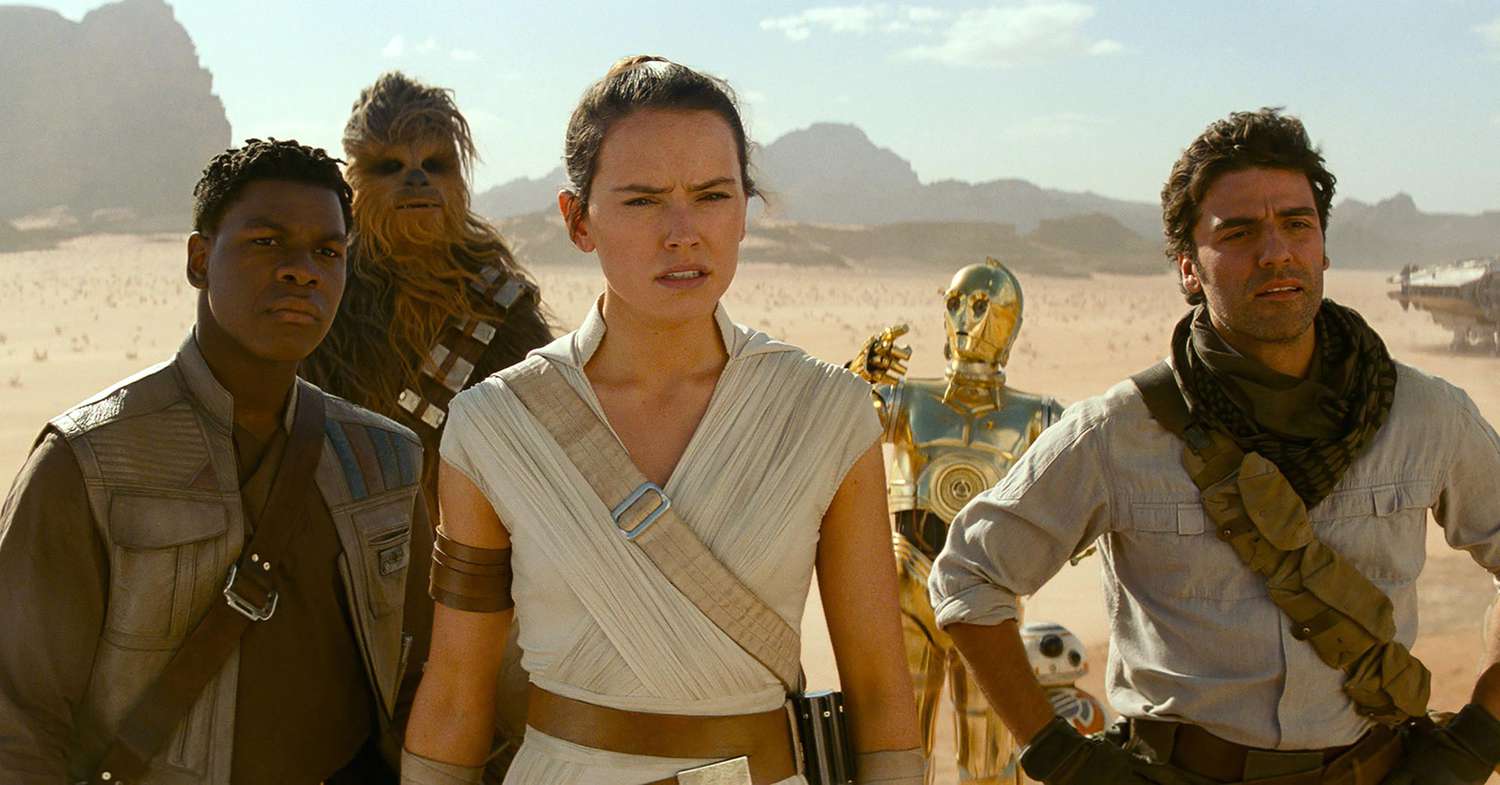
'The Rise of Skywalker' isn't a bad Star Wars film, and here's why
'Star Wars: The Rise of Skywalker' is not a bad film and we've got a five-point-plan to prove it
New Star Wars Movie Could Release In 2025, 6 Years After Rise Of Skywalker
Film reporter Jeff Sneider believes that a new Star Wars film could be released in 2025, putting an end to a 6 year wait since Rise of Skywalker.
BY MITCH IRWIN
PUBLISHED 1 DAY AGO
Although there has not been an installment since 2019's Rise of Skywalker, Jeff Sneider believes that a new Star Wars film could release by 2025. The newest Star Wars trilogy, which kicked off with The Force Awakens in 2015, faced some mixed reviews upon its release. Despite this, a new Star Wars film has not only been confirmed but has been given a tentative release date as well.
Although this will be the newest Star Wars theatrical release since the sequel trilogy, the new film is set to be detached from The Rise of Skywalker. The ninth episode in the series was meant to exist as an end to the Skywalker saga, which when it was all said and done spanned three trilogies. Though this does not mean that this is the end of characters like Kylo Ren and Poe Dameron, as they might still appear in spin-off series'. Additionally, Disney has made no mention of the existence of an upcoming Episode X.
Though the Skywalker saga is seemingly at an end, Sneider shared some Star Wars news on The Hot Mic podcast. Sneider stated that he believes the new Star Wars film, scripted by Damon Lindelof (Watchmen) and up-and-comer Justin Britt-Gibson, will be the next theatrical release for the franchise. Check out what Sneider had to say below:
I think it’s gonna come out December [19] 2025… I’ve been saying that since I reported it. So I broke that story in March… I didn’t realize, what I had originally reported, it was unclear whether this guy [Lindelof] was going to be writing the script or leading a writer’s room. I knew he was working on something up there, right? So it turns out he was leading a writer’s room… In the end, [Justin Britt-Gibson] is going to be co-writing with Damon, and yeah, they have the director from Ms. Marvel [Sharmeen Obaid-Chinoy]. I think that’s an interesting package, I think that we’ll see it Christmas 2025.
Although there have been releases like Obi-Wan Kenobi and Andor, to name a couple, it will have been 6 years since a proper Star Wars theatrical release. Initially, Disney scheduled three Star Wars movies after The Rise of Skywalker, the first of which was to be directed by the Game of Thrones showrunners, D.B. Weiss and David Benioff. That project was supposed to hit theaters on December 16, 2022, but was ultimately canceled. Coming off of that cancelation, Disney also released a new schedule for their release dates as projects were pushed back due to the pandemic. Among these changed release dates were those of the new Star Wars films, which were initially rescheduled to December 19th, 2025, and December 17th, 2027.
It will be interesting to see a new Star Wars film not involved with the Skywalker saga, as that paves the way for a whole batch of untapped characters and storylines. Fans of the franchise who cannot wait that long need not worry however, as there are many Star Wars installations between now and the next theatrical release. With season 2 of Star Wars: The Bad Batch and season 3 of The Mandalorian just around the corner, as well as many unannounced films in development, this is an exciting time to be a Star Wars fan.
Film reporter Jeff Sneider believes that a new Star Wars film could be released in 2025, putting an end to a 6 year wait since Rise of Skywalker.
BY MITCH IRWIN
PUBLISHED 1 DAY AGO
Although there has not been an installment since 2019's Rise of Skywalker, Jeff Sneider believes that a new Star Wars film could release by 2025. The newest Star Wars trilogy, which kicked off with The Force Awakens in 2015, faced some mixed reviews upon its release. Despite this, a new Star Wars film has not only been confirmed but has been given a tentative release date as well.
Although this will be the newest Star Wars theatrical release since the sequel trilogy, the new film is set to be detached from The Rise of Skywalker. The ninth episode in the series was meant to exist as an end to the Skywalker saga, which when it was all said and done spanned three trilogies. Though this does not mean that this is the end of characters like Kylo Ren and Poe Dameron, as they might still appear in spin-off series'. Additionally, Disney has made no mention of the existence of an upcoming Episode X.
Though the Skywalker saga is seemingly at an end, Sneider shared some Star Wars news on The Hot Mic podcast. Sneider stated that he believes the new Star Wars film, scripted by Damon Lindelof (Watchmen) and up-and-comer Justin Britt-Gibson, will be the next theatrical release for the franchise. Check out what Sneider had to say below:
I think it’s gonna come out December [19] 2025… I’ve been saying that since I reported it. So I broke that story in March… I didn’t realize, what I had originally reported, it was unclear whether this guy [Lindelof] was going to be writing the script or leading a writer’s room. I knew he was working on something up there, right? So it turns out he was leading a writer’s room… In the end, [Justin Britt-Gibson] is going to be co-writing with Damon, and yeah, they have the director from Ms. Marvel [Sharmeen Obaid-Chinoy]. I think that’s an interesting package, I think that we’ll see it Christmas 2025.
Although there have been releases like Obi-Wan Kenobi and Andor, to name a couple, it will have been 6 years since a proper Star Wars theatrical release. Initially, Disney scheduled three Star Wars movies after The Rise of Skywalker, the first of which was to be directed by the Game of Thrones showrunners, D.B. Weiss and David Benioff. That project was supposed to hit theaters on December 16, 2022, but was ultimately canceled. Coming off of that cancelation, Disney also released a new schedule for their release dates as projects were pushed back due to the pandemic. Among these changed release dates were those of the new Star Wars films, which were initially rescheduled to December 19th, 2025, and December 17th, 2027.
It will be interesting to see a new Star Wars film not involved with the Skywalker saga, as that paves the way for a whole batch of untapped characters and storylines. Fans of the franchise who cannot wait that long need not worry however, as there are many Star Wars installations between now and the next theatrical release. With season 2 of Star Wars: The Bad Batch and season 3 of The Mandalorian just around the corner, as well as many unannounced films in development, this is an exciting time to be a Star Wars fan.
All they have to do is use this as a base..It will be interesting to see a new Star Wars film not involved with the Skywalker saga, as that paves the way for a whole batch of untapped characters and storylines.
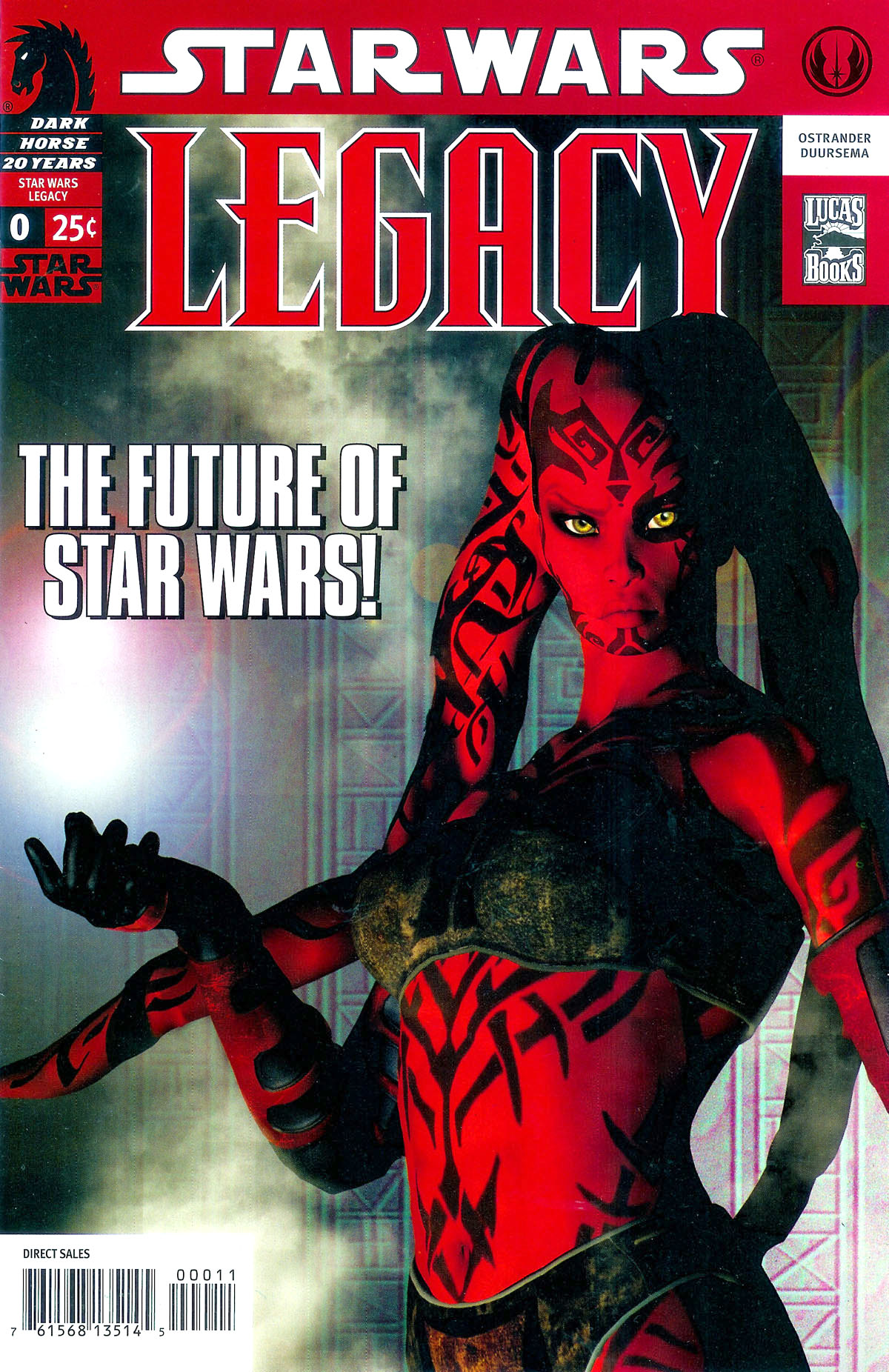
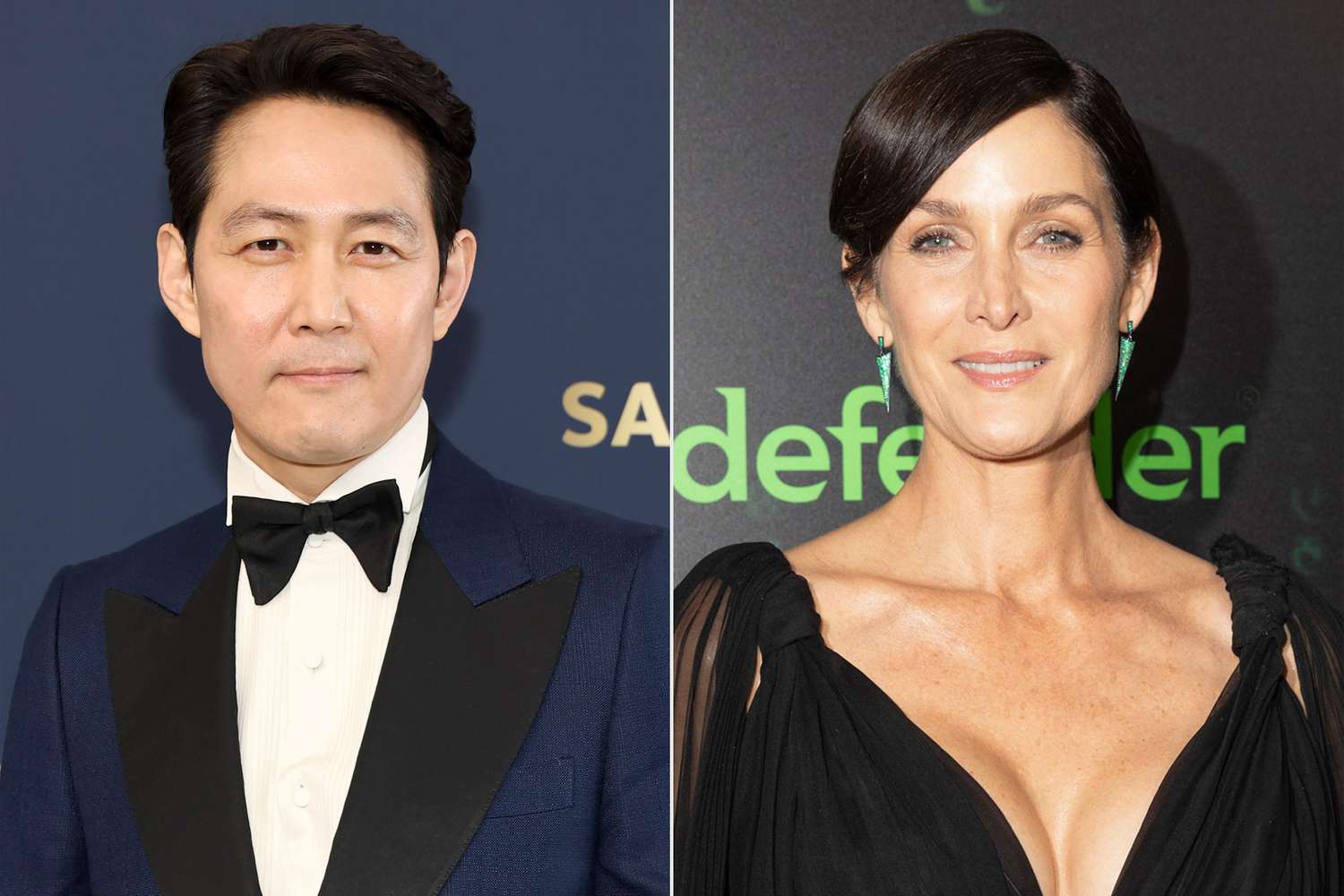
'Star Wars' series 'The Acolyte' confirms cast: Carrie-Anne Moss and more
'Star Wars' series 'The Acolyte' confirms main cast, including 'The Matrix' star Carrie-Anne Moss and 'Squid Game' Emmy winner Lee Jung-jae. See the first look.
What would be a good way to retire is he makes a live action cameo. Doesn’t say anything and bumps into Darth Vader.
The visual would be funny.
The Life Of The Poor Behind The Streets Guangzhou, China
This shit looks like a real life Coruscant in the sub-levels where the lower class live.
This shit looks like a real life Coruscant in the sub-levels where the lower class live.
The Life Of The Poor Behind The Streets Guangzhou, China
This shit looks like a real life Coruscant in the sub-levels where the lower class live.
Reminds me of the Kowloon Walled City
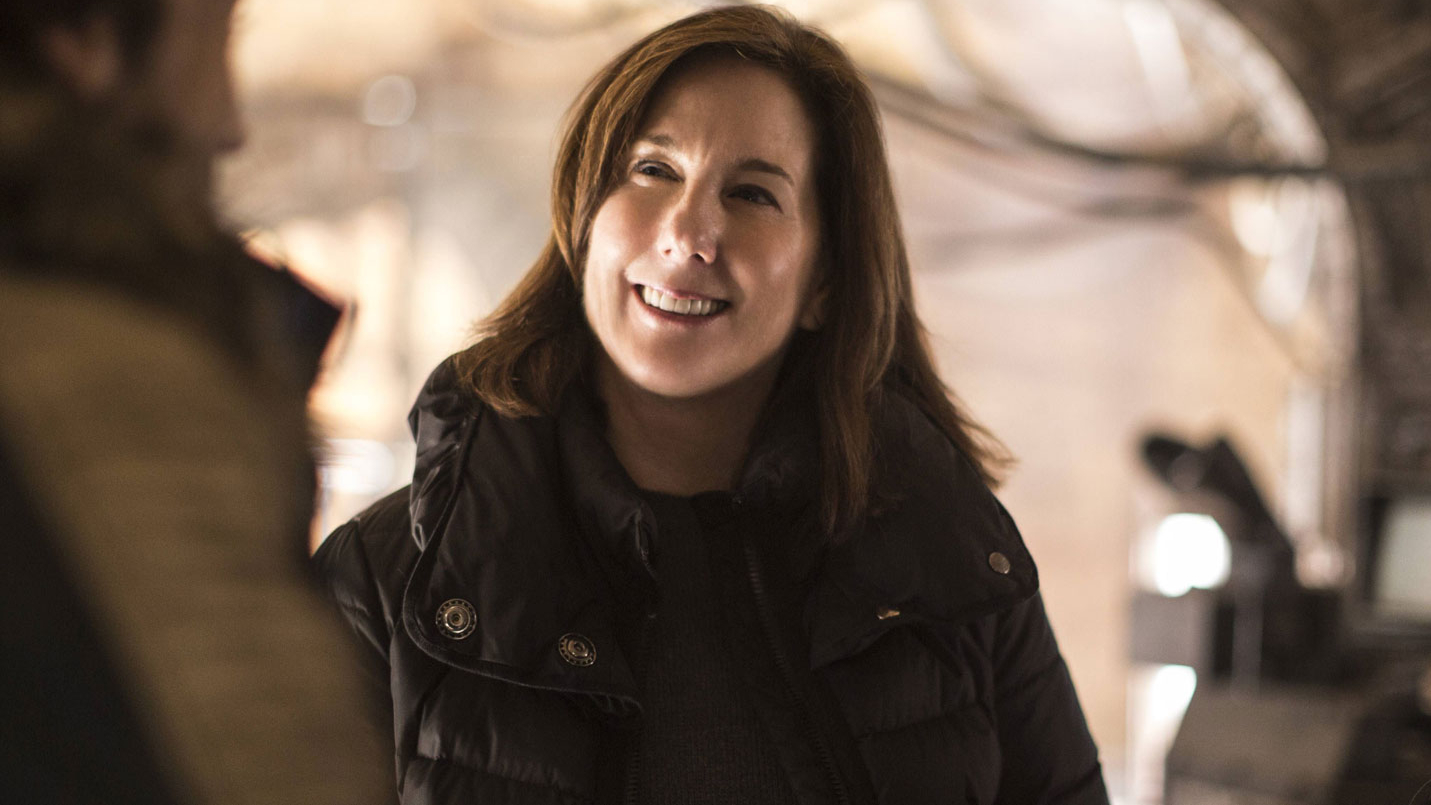
Star Wars Boss Kathleen Kennedy Next To Be Fired?
Is Lucasfilm's Kathleen Kennedy the next on the Disney chopping block? Here's what we know about the possibility!
 www.giantfreakinrobot.com
www.giantfreakinrobot.com
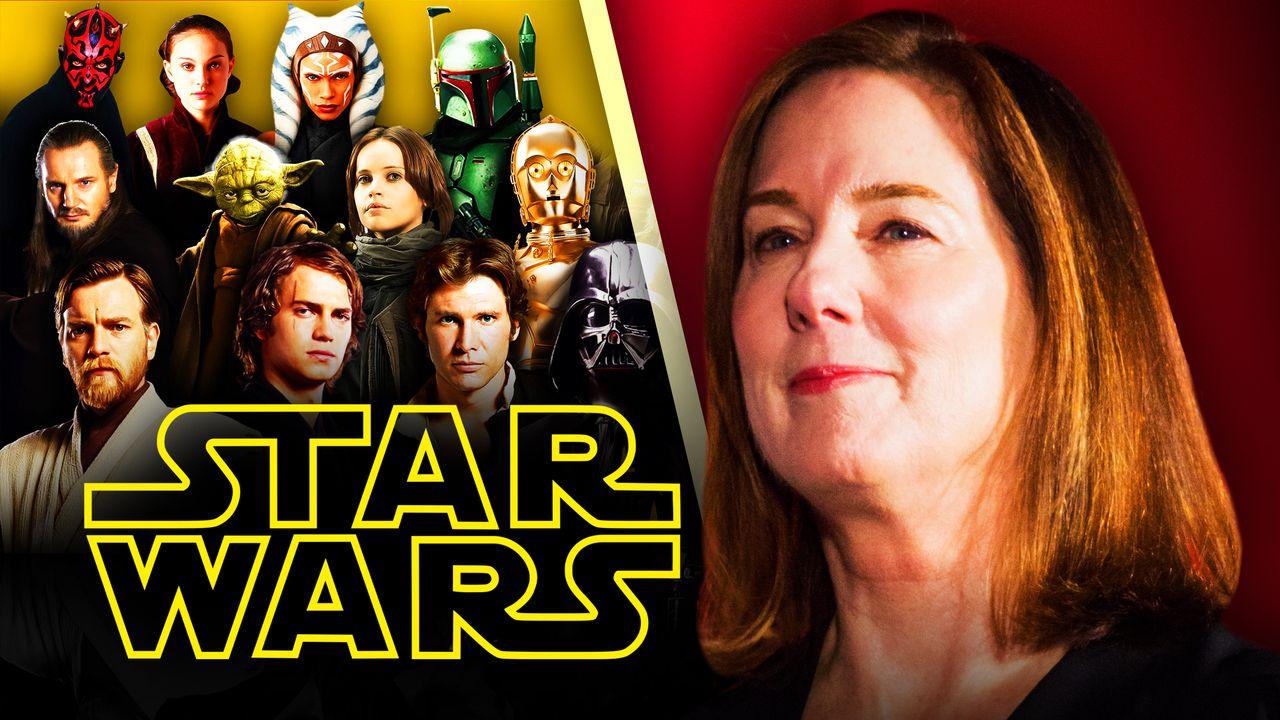
Disney Plans to Remove Star Wars Boss Kathleen Kennedy (Rumor)
Kathleen Kennedy's time as President of Lucasfilm may been coming to a close.

Star Wars Boss Kathleen Kennedy Next To Be Fired?
Is Lucasfilm's Kathleen Kennedy the next on the Disney chopping block? Here's what we know about the possibility!www.giantfreakinrobot.com

Disney Plans to Remove Star Wars Boss Kathleen Kennedy (Rumor)
Kathleen Kennedy's time as President of Lucasfilm may been coming to a close.thedirect.com
I haven't watched Campea today but yesterday he mentioned that Kathleen Kennedy may stay around longer because Bob Iger was one of her allies...this let me know that Iger isn't playing this time around as he's only supposed to be there for two years. I'll come back and watch this though @playahaitian
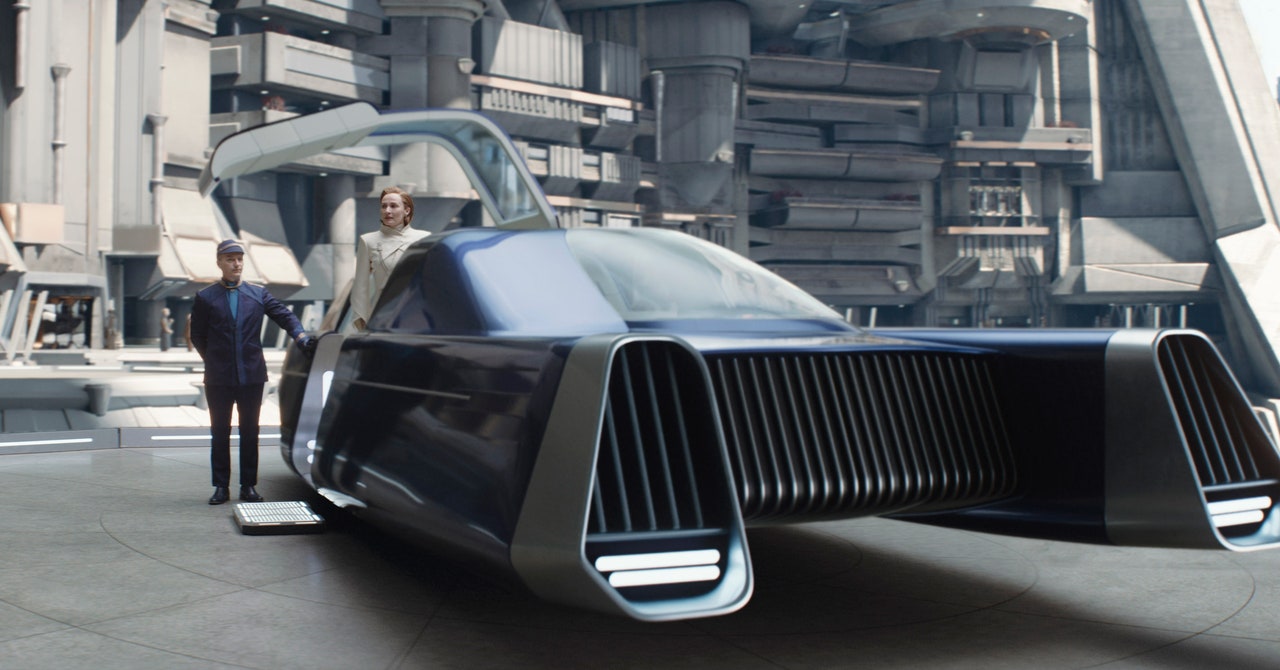
After 'Andor,' Read These 5 Comics
These books were looking at the origins of the war between the Rebels and the Empire long before the new Disney+ show.
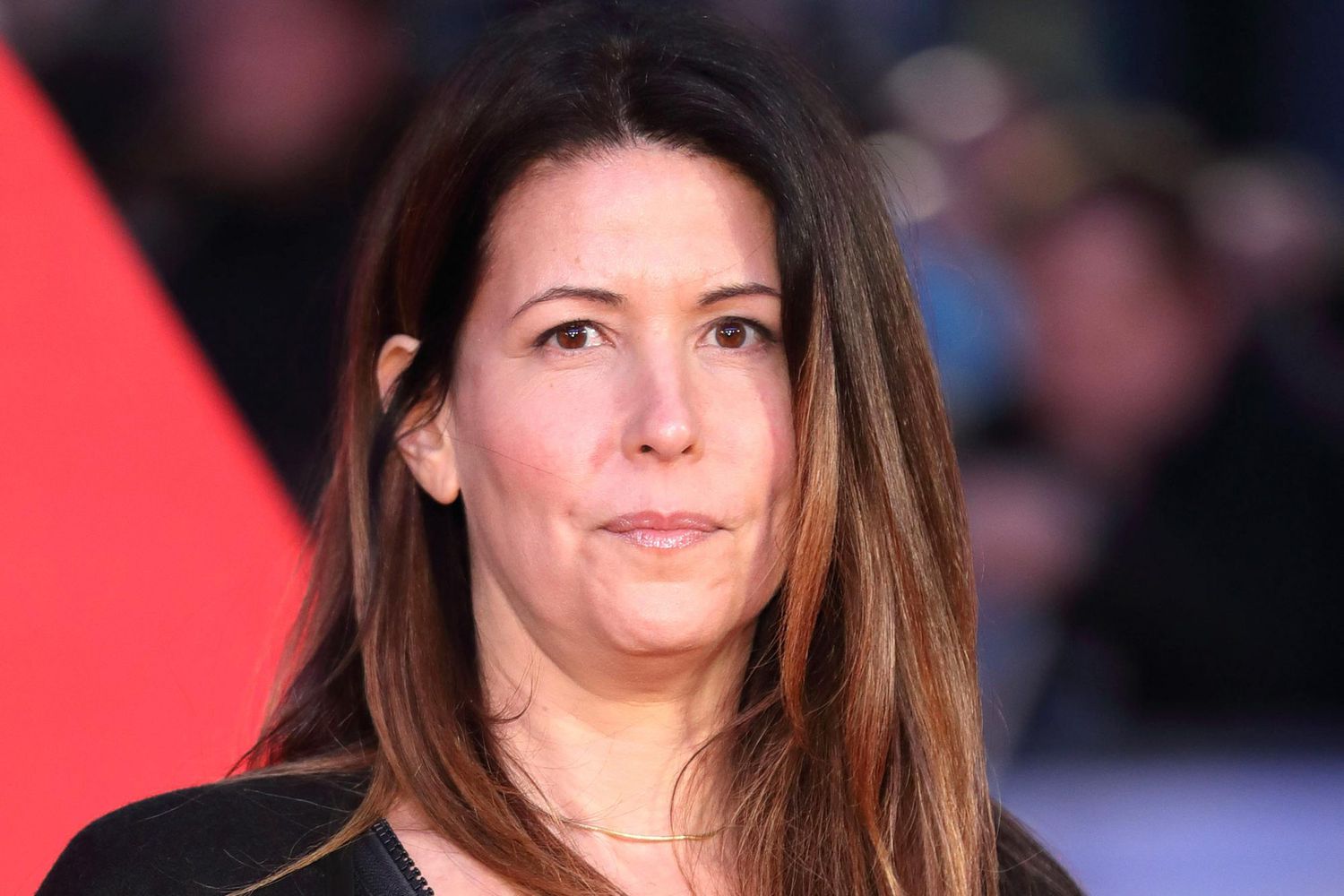
Patty Jenkins denies walking away from 'Wonder Woman 3,' addresses 'Rogue Squadron' delay
"I never walked away": Patty Jenkins clears up her involvement, or lack thereof, with 'Wonder Woman 3' and 'Rogue Squadron'


